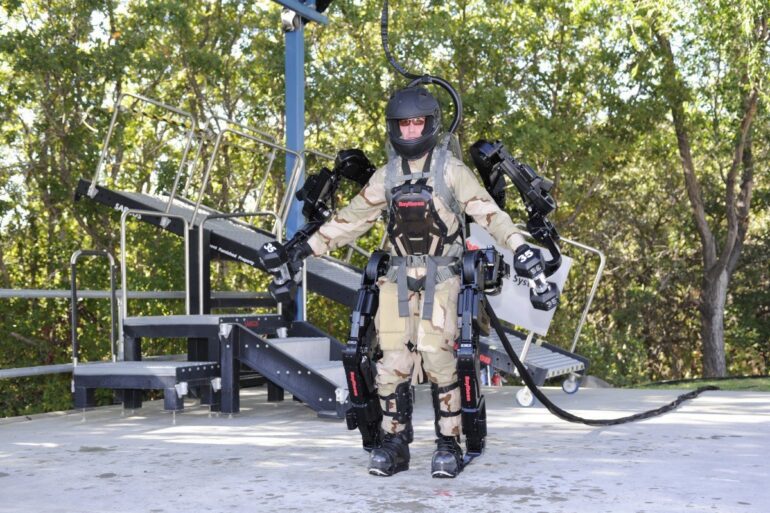- North Carolina University’s Lab of Biomechatronics developed an AI-driven universal exoskeleton.
- The exoskeleton adapts to walking, running, and stair-climbing without user-specific adjustments.
- AI automates control policy generation, reducing costs and complexity.
- Potential future prices for exoskeletons could drop to $2,000 to $5,000.
- Neural networks optimize performance by simulating human movement and exoskeleton interaction.
- Significant metabolic rate reductions achieved during tests without individual gait adjustments.
- Continuous control mechanisms enable seamless transitions between activities, improving user experience.
- Focus on future improvements includes enhancing comfort, reducing weight, and expanding accessibility to individuals with mobility impairments.
Main AI News:
Exoskeletons, once confined to the realms of science fiction, are now on the brink of a transformative leap forward, thanks to pioneering research at North Carolina University’s Lab of Biomechatronics and Intelligent Robotics. Led by associate professor Hao Su, the team has developed a groundbreaking approach that harnesses artificial intelligence to create a universal exoskeleton capable of seamlessly adapting to various activities—walking, running, and stair-climbing—without the need for individualized adjustments.
Traditionally, exoskeletons required meticulous handcrafting of control policies tailored to each user, a laborious and costly process that limited their widespread adoption. However, Su’s team has shattered these barriers by employing AI to automate the generation of control policies. This innovation not only streamlines the customization process but also slashes costs significantly. Whereas exoskeletons previously commanded prices upwards of $200,000, Su predicts that future iterations could be produced for as little as $2,000 to $5,000, democratizing access to this life-changing technology.
At the heart of this breakthrough is a sophisticated interplay of digital modeling and neural networks. The team developed digital replicas of the human musculoskeletal system and the exoskeleton robot, employing multiple neural networks to optimize their interaction. One neural network simulates human skeletal movement, driven by simplified muscle models, while another models the exoskeleton’s response. A third network focuses on predicting how the human and exoskeleton models will interact, optimizing performance by minimizing muscle activity.
During testing, the AI-driven exoskeleton demonstrated exceptional performance metrics, surpassing previous benchmarks in metabolic rate reduction during walking, running, and stair climbing. These achievements were realized without the need for exhaustive adjustments to accommodate individual gaits, marking a significant departure from conventional approaches reliant on finite state machines and switch controllers.
Central to the innovation is the adoption of continuous control mechanisms enabled by neural networks, allowing the exoskeleton to smoothly transition between different activities. This seamless integration enhances user experience by eliminating abrupt mode switches, thereby making exoskeleton-assisted mobility more intuitive and efficient.
Looking ahead, Su and his team are focused on refining the exoskeleton’s design to enhance comfort, reduce weight, and minimize noise levels, further improving its usability and appeal. Moreover, they aim to expand their research to include individuals with specific mobility impairments, leveraging personalized digital models to tailor exoskeleton performance based on unique movement profiles.
Ultimately, the goal is to make exoskeleton technology more inclusive and accessible, extending its benefits to individuals with diverse mobility needs. By leveraging AI to automate and optimize exoskeleton functionality, North Carolina University’s groundbreaking research sets a new standard in robotics-assisted mobility solutions, paving the way for a future where technology enhances human capability and quality of life.
Conclusion:
The integration of AI in exoskeleton technology not only enhances functionality and reduces costs but also sets a precedent for broader market accessibility. As prices decrease and performance improves, the potential for widespread adoption increases, offering transformative benefits to individuals with mobility challenges and positioning AI-driven exoskeletons as a pivotal innovation in the assistive technology sector.

